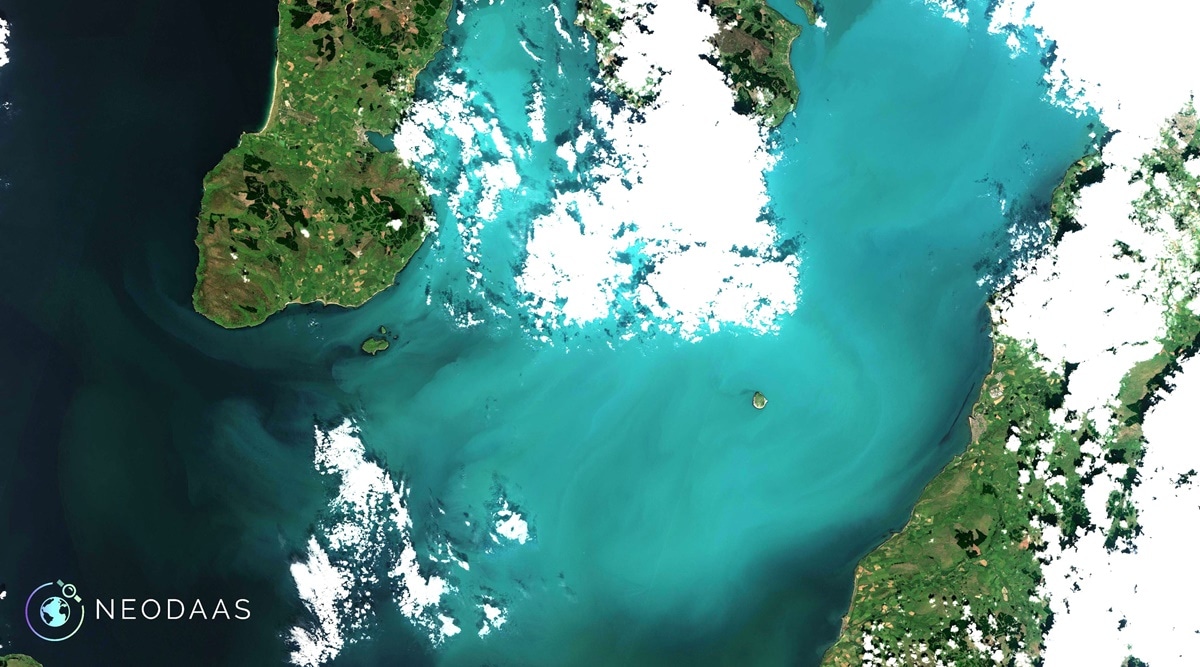 Image produced by NEODAAS on 21 Jun 2021 shows the bright turquoise colour of the sea near the Island of Arran. (Twitter/@PeterIMiller)
Image produced by NEODAAS on 21 Jun 2021 shows the bright turquoise colour of the sea near the Island of Arran. (Twitter/@PeterIMiller) On June 24, locals and visitors to the Island of Arran, Scotland were stunned by the bright turquoise colour of the sea. To decode this strange event, researchers studied the water samples and Peter Miller from Plymouth Marine Laboratory, U.K. confirmed on Sunday via Twitter that it was caused by single-celled algae called coccolithophores. It was identified as Emiliania huxleyi, a common non-toxic species found in almost all ocean ecosystems. Last year, NASA’s Terra satellite captured a similar bloom caused by the same species in Norway’s Hardangerfjord.
I can confirm that it was #coccolithophore E. hux. that turned Clyde turquoise; hardly any other phytoplankton there. Non-toxic, 10μm across. Thanks to @BresnanEileen for electron microscopy of 24 Jun sample @FSC_Millport. https://t.co/AhSPhIS46N pic.twitter.com/Orphbmb4Tu
— Peter Miller (@PeterIMiller) July 4, 2021
Phytoplankton ecologist Eileen Bresnan carried out advanced microscopic studies on the water sample to identify the algae and revealed its white calcium carbonate discs. The light reflecting off these white chalky algae at the upper layer of the sea gave out the perfect turquoise colour.
“These blooms are a common occurrence along the shelf edge to the west of Scotland and in the North Sea. It is unusual for them to be reported in the Clyde Sea area,” explained the spokesperson for Marine Scotland in an email to indianexpress.com. She added that there was no effect on marine life reported and no cleanup action was required.
Paul Tett, from the Scottish Association for Marine Science, told BBC.com: “The good news is these little algae are one of nature’s ways of reducing carbon dioxide in the atmosphere because the calcareous plates take up carbon dioxide from seawater and when they sink to the bottom they are removing it from the sea and the atmosphere.”
- The Indian Express website has been rated GREEN for its credibility and trustworthiness by Newsguard, a global service that rates news sources for their journalistic standards.

